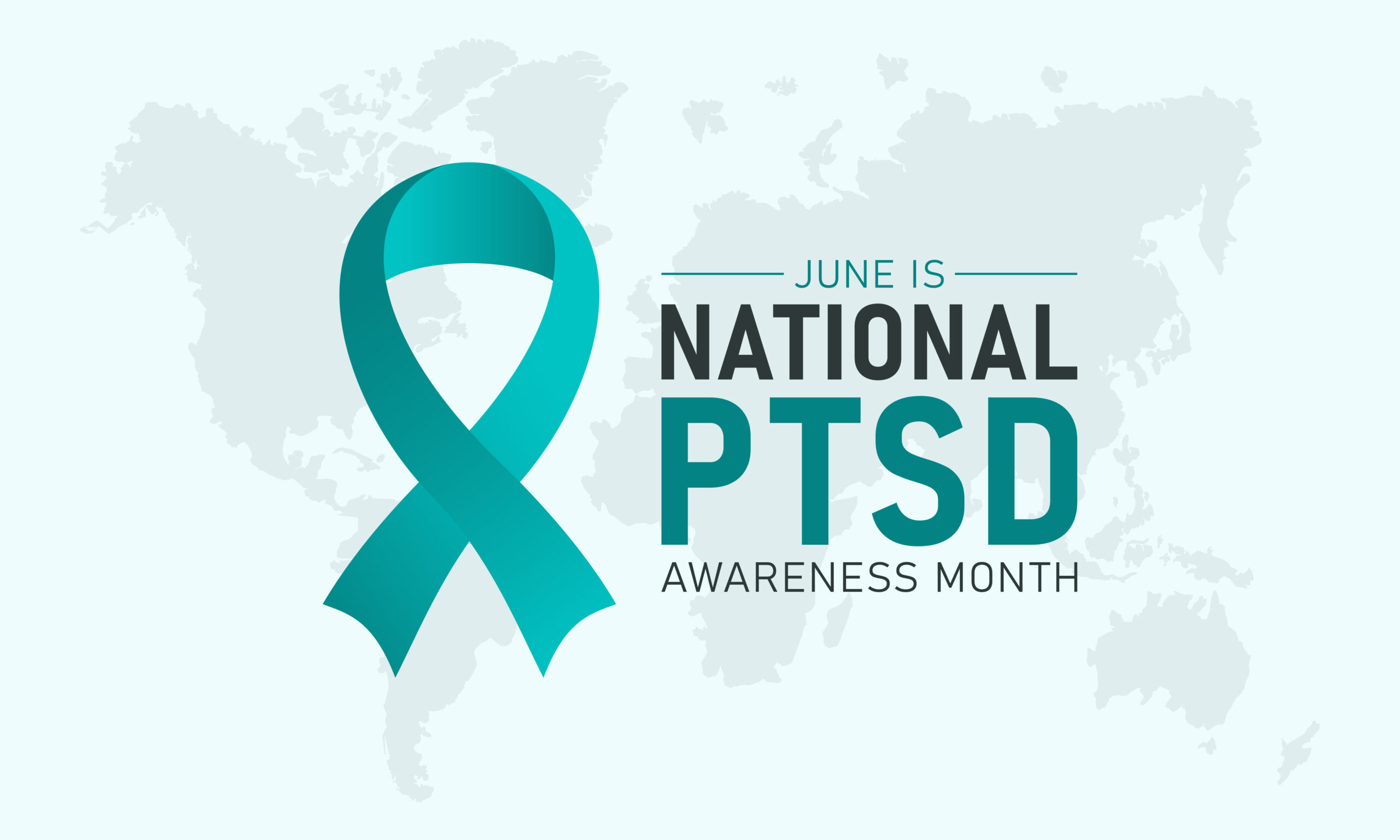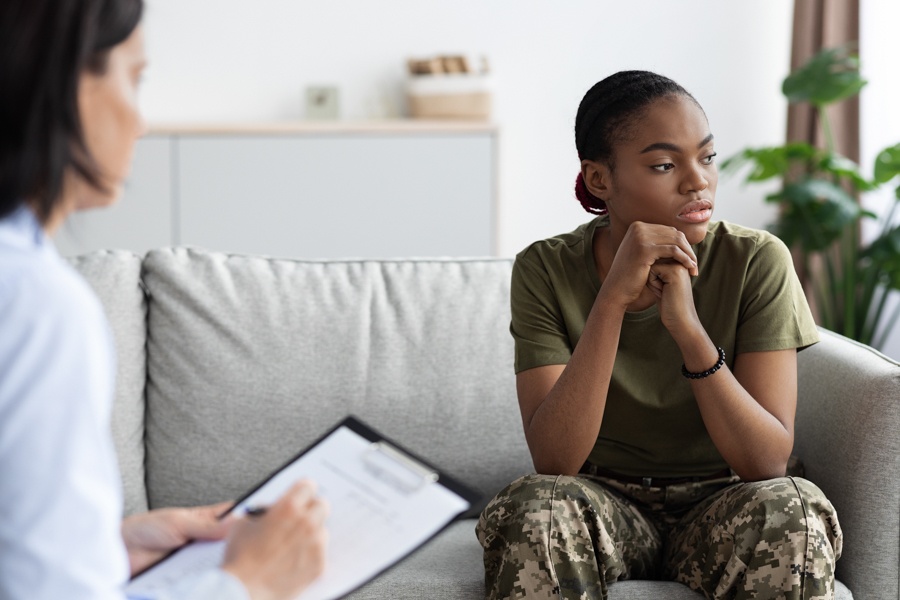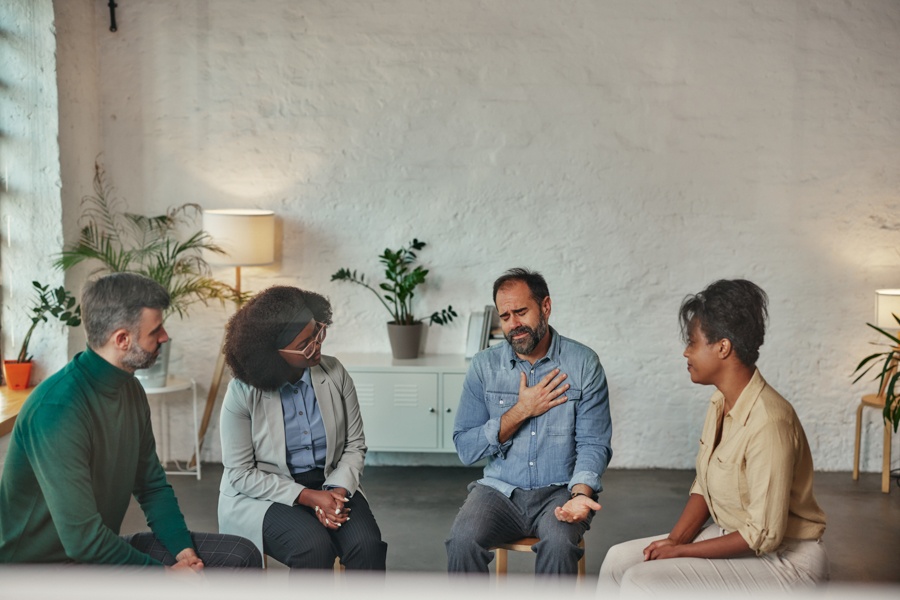June is PTSD Awareness Month. It is intended to bring awareness to people about post-traumatic stress disorder (PTSD). By educating the public, it reduces the stigma surrounding PTSD and increases the number of people getting treatment.
Although PTSD treatments work, many people struggling with PTSD don’t seek help. By educating yourself during PTSD Awareness Month, you can help others by encouraging them into treatment.
How Many People Struggle With PTSD?
According to the National Center for PTSD, nearly 6 percent of American adults will develop PTSD in any given year. That is almost 6 out of every 100 adults. This number is up from last year when 3.6 percent of adults had PTSD.
In any given year, almost 12 million adults in the U.S. have PTSD. Nearly 8 in 100 women struggle with PTSD in their lifetime compared to 4 in 100 men.
If you are concerned you or a loved one are struggling with PTSD, keep reading to learn the signs and symptoms and how to cope with PTSD.
What is PTSD?
PTSD is an anxiety disorder that some people develop after witnessing or living through a life-threatening or traumatic event. These events can include physical or sexual abuse or assault, natural disasters, war, serious car crashes, severe health issues, and childbirth experiences.
PTSD can cause sleep problems, recurrent dreams about the trauma, anger, irritability, difficulties in relationships, intense reactions when triggered, and isolation. These problems often disappear after a few months, but some people may struggle for years.
PTSD is extremely common. However, there is still a need for PTSD Awareness Month because there isn’t enough education on it. Treatments often include trauma-focused psychotherapy, holistic therapies, and medications if needed.

What are the Signs and Symptoms of PTSD?
The signs and symptoms typically appear right after the traumatic event. Sometimes, they don’t appear for months or years after the event, and symptoms can also come and go for years. If the symptoms last more than 4 weeks and interfere with work and home life, seeking help is important.
PTSD symptoms are broken down into 4 types and may be experienced differently for every person.
Memories or flashbacks from the traumatic event can happen at any moment. They can feel real and be very scary. This includes:
- Having nightmares
- Having flashbacks or feeling like you are going through the event again
- Being triggered – Seeing, hearing, or smelling something that causes you to relive the event. This can include news reports, seeing an accident, or hearing fireworks.
After a traumatic event, you may think more negatively of yourself and others. For instance:
- Feeling numb – inability to have loving, positive feelings for others, losing interest in once-enjoyed activities
- Struggling to talk about the event or forgetting parts of it
- Thinking the world is dangerous and you can’t trust anyone
- Feeling guilty or shameful for not doing more to stop the event from happening
Many people struggling with PTSD try to avoid places, people, or situations that remind them of the traumatic event. They may even avoid talking or thinking about it. For example:
- Avoiding crowds because they feel dangerous
- Avoiding driving if you were in a bad accident or a military convoy bombing
- Avoid watching movies about the event – avoiding movies on earthquakes if you were in one
- Staying busy to avoid thinking about the trauma or avoiding help so you don’t have to talk about it
Someone with PTSD may seem jittery or on alert for danger. They may also become suddenly angry or irritable. For example:
- Having a hard time sleeping
- Trouble concentrating
- Startled by loud noises or surprises
- Having unhealthy behaviors like abusing drugs, smoking, or drinking alcohol
For people with PTSD, the world feels unsafe. Between the nightmares, triggers, and feeling on edge, struggling with PTSD can be mentally and physically exhausting. Seeking help can teach you healthy ways to handle your symptoms and help you feel safe again.

What are the Facts of PTSD?
- Up to 8% of American adults will experience PTSD
- Women are twice as likely as men to struggle with PTSD
- The duration and intensity of the traumatic event can influence the development of PTSD
- A history of mental health issues, lack of social support, and other stressors can increase the risk of developing PTSD.
- Diagnosing PTSD is done through a clinical evaluation.
What are Ways to Cope with PTSD?
Coping with PTSD involves a combination of professional treatment, self-care strategies, and support systems. Here are some effective ways to manage and alleviate PTSD symptoms:
- Cognitive Behavioral Therapy (CBT) – Focuses on changing negative thought patterns and behaviors
- Trauma-Focused CBT – Specifically designed to address trauma-related thoughts and behaviors
- Eye Movement Desensitization and Reprocessing (EMDR) – Involves processing distressing memories while focusing on external stimuli (such as eye movements)
- Exposure Therapy – Gradually and safely exposes individuals to trauma-related thoughts, feelings, and situations to help them cope
- Antidepressants – SSRIs (like sertraline and paroxetine) can help manage symptoms.
- Anti-Anxiety Medications – To address anxiety and panic attacks.
- Sleep Aids – For those struggling with insomnia.
- Regular exercise can help reduce stress and anxiety, improve mood, and enhance overall well-being.
- Eating a balanced diet supports physical health, positively impacting mental health.
- A regular sleep routine can improve sleep quality and reduce symptoms like fatigue and irritability.
- Deep breathing, progressive muscle relaxation, and guided imagery can help reduce stress and anxiety.
- Mindfulness practices, including meditation and yoga, can help ground individuals in the present moment and reduce stress.
- Connecting with friends, family, or support groups can provide emotional support and a sense of community.
- Joining groups for individuals with PTSD can offer shared experiences and coping strategies.
- Openly discussing feelings and experiences with trusted individuals can alleviate isolation.
- Establishing a daily routine can provide structure and a sense of normalcy.
- Breaking tasks into manageable steps can help accomplish goals and reduce feeling overwhelmed.
- Identifying and avoiding known triggers when possible while gradually working on reducing sensitivity to them through therapy.
- Writing about thoughts and feelings can help process emotions and gain insight.
- Engaging in activities that bring joy and relaxation can distract and create a sense of accomplishment.
- Reducing exposure to news or media that might trigger distressing memories or anxiety.
- Regular Therapy – Consistent sessions with a mental health professional can provide ongoing support and strategies.
- Emergency Plan—Having a plan for managing crises, including emergency contacts and strategies, can be reassuring.
Combining these strategies can create a comprehensive approach to managing PTSD, helping people regain control over their lives and improve their overall quality of life.
Seeking Treatment During PTSD Awareness Month
Have you realized you are struggling with symptoms of PTSD and need help? At Peak Wellness in Marlton, New Jersey, we understand that PTSD can negatively impact a person’s life and work alongside them to heal them from the trauma and live a healthy life. Contact us today for more information on our treatments.

